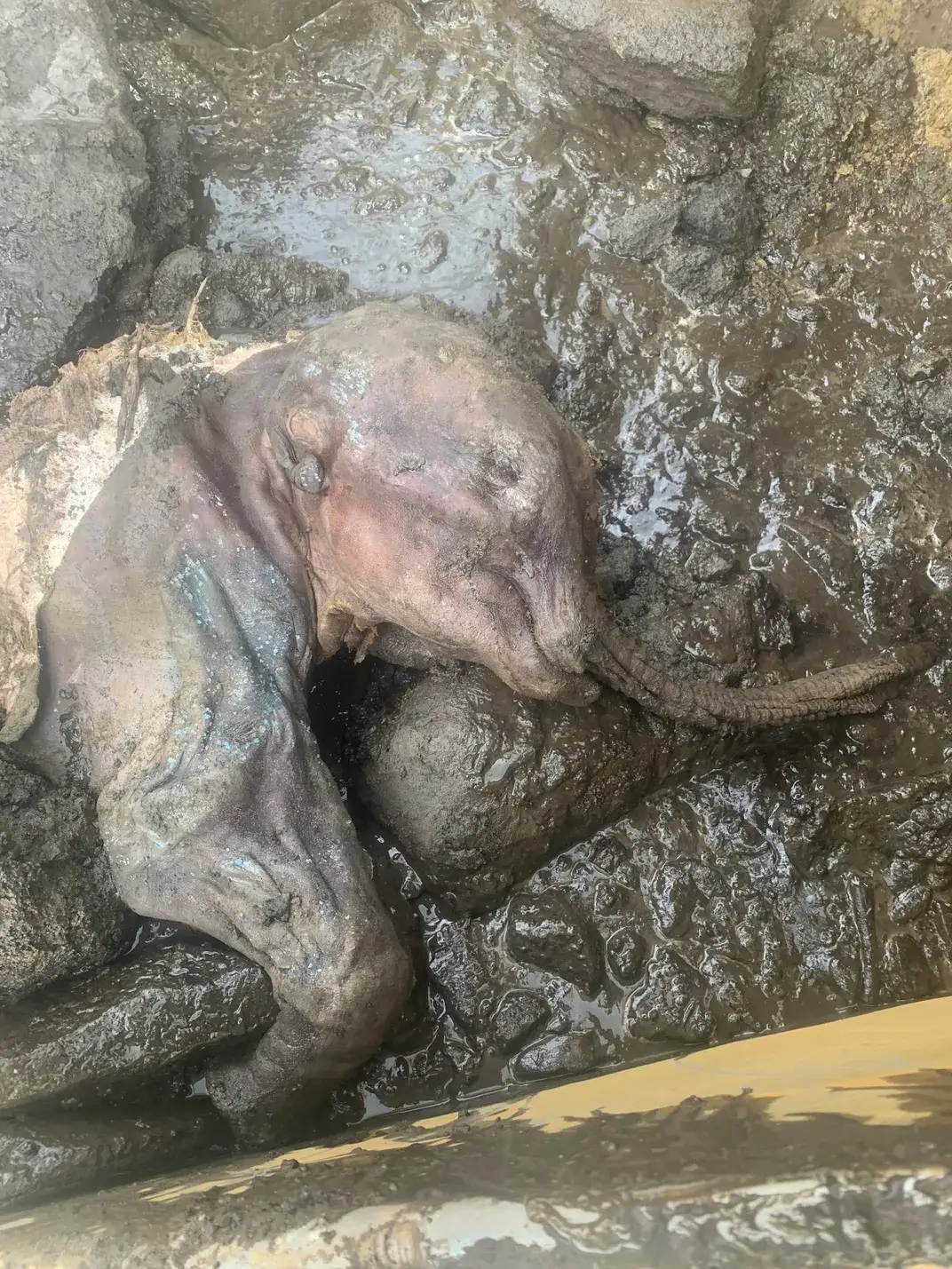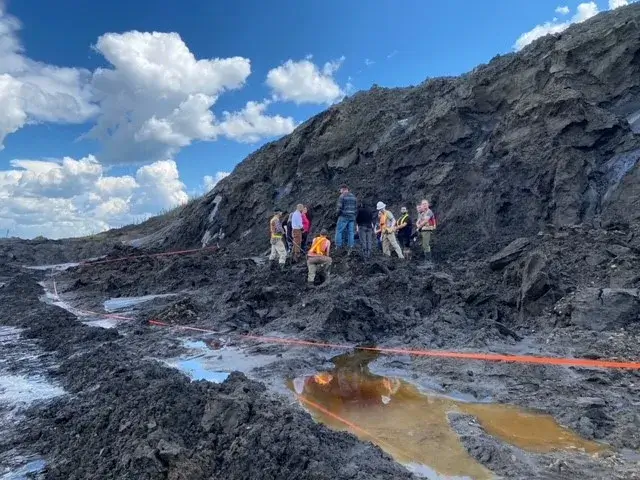
Well-Preserved, 30,000-Year-Old Baby Woolly Mammoth Emerges From Yukon Permafrost
The mummified creature is helping to heal the rift between the Tr’ondëk Hwëch’in people and the miners and scientists who came to their lands.
A preserved baby mammoth has been discovered by gold miners in the Klondike gold fields, located within the traditional tribal territory of the Trʼondëk Hwëchʼin in the Yukon, Canada.
Trʼondëk Hwëchʼin Elders named the mammoth calf “Nun cho ga”, meaning “big baby animal” in the Hän language, and has been described as the most complete mammoth found in North America.
The specimen is a woolly mammoth (Mammuthus primigenius), an extinct species of mammoth that lived during the Pleistocene until its extinction in the Holocene epoch. The species are among the most studied of any prehistoric animal thanks to other specimens being found frozen in Siberia and Alaska.
Woolly mammoths had very long tusks (modified incisor teeth) and were roughly the same size as modern African elephants.
“Adult males had a shoulder height of between 2.7-3.4 metres and weighed up to 6 metric tons, whilst adult females reached 2.6–2.9 metres in shoulder heights and weighed up to 4 metric tons.”

Woolly mammoths declined at the end of the Pleistocene, disappearing throughout most of its mainland range, although isolated populations survived on St. Paul Island until 5,600 years ago, on Wrangel Island until 4,000 years ago, and possibly (based on ancient eDNA) in the Yukon up to 5,700 years ago.
The calf is a female that was frozen in permafrost over 30,000 years ago, a period when mammoths, wild horses, cave lions and giant steppe bison roamed the Yukon. Nun cho ga is similar in size to “Lyuba”, a 42,000-year-old calf discovered in Siberia in 2007 and “Effie”, a partial calf found in 1948 at a gold mine in interior Alaska.
A Mysterious 25,000 Year Old Structure Built of The Bones of 60 Mammoths
The discovery was made during excavations for gold in Eureka Creek along the foot of the Baker-Minook divide. Geologists from the Yukon Geological Survey and the University of Calgary recovered the remains in cooperation with the Klondike Placer Miners’ Association and the Trʼondëk Hwëchʼin.
Minister of Tourism and Culture Ranj Pillai said:
“The Yukon has always been an internationally renowned leader for ice age and Beringia research. We are thrilled about this significant discovery of a mummified woolly mammoth calf: Nun cho ga. Without strong partnerships between placer miners, Trʼondëk Hwëchʼin, and the Yukon government, discoveries like this could not happen.”
* * *
NEXT UP!
According To Controversial Ancient Texts, The Egyptian Civilization Is At Least 40,000 Years Old
Little has been said about the origin and true age of the Ancient Egyptian civilization. The history of this great civilization seems to be fragmented into two pieces which are respectively considered as myth and actual history.
For historians to come to this conclusion, they had to obtain from somewhere adequate information which leads to the belief that Pre-Dynastic Egypt is entirely a myth, while everything from the first official Pharaoh Menes-Narmer until the Graeco-Roman Period is considered a historical fact.
One of the most reliable sources for the modern study of Ancient Egyptian history and the rulers who reigned over the land of the Pharaohs comes from ancient Egyptian High Priest Manetho, who had access to unlimited ancient texts from the Ancient Library of Alexandria, and who wrote for the Pharaoh the history of Ancient Egypt in 30 volumes makes reference to the divine beings that ruled during Pre-Pharaonic Egypt.
* * *
READ MORE: The Mystery of Frozen Mammoth Carcasses In Siberia
Interesting! What Powered The Vimana, The 6,000-Year-Old Flying Machines of Ancient India?
Telegram: Stay connected and get the latest updates by following us on Telegram!
We’d love to hear from you! If you have a comment about this article or if you have a tip for a future Collective Spark Story please let us know below in the comment section.
